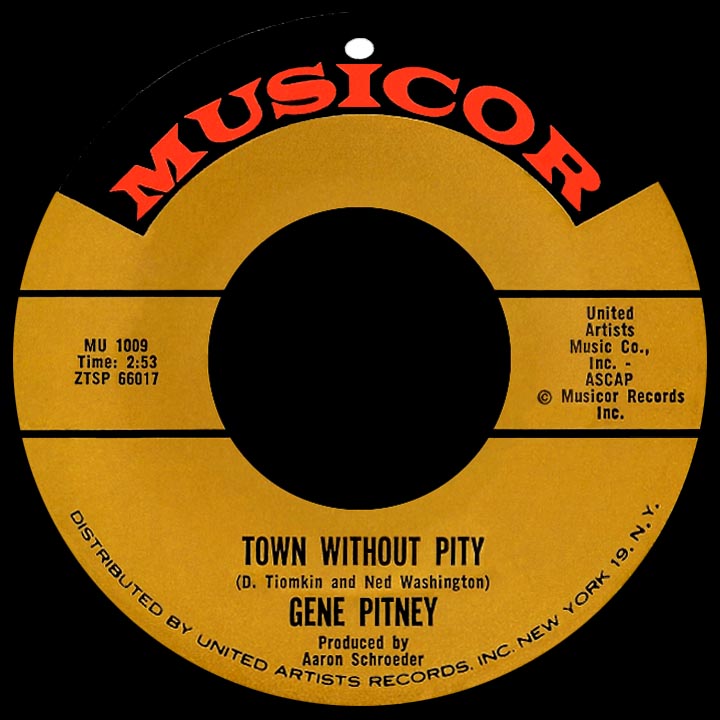 1968 Chicago soul with strings, finally on CD
1968 Chicago soul with strings, finally on CD
The Soulful Strings are surprisingly little known, given the relative success of their first few albums. Their origin lay somewhere between Chess label owner Leonard Chess, producer Esmond Edwards, and arranger Richard Evans, but the project’s voice and artistic success lay squarely with the latter. Working with Cadet studio players, including Charles Stepney, Lenard Druss, Bunky Green, Phil Upchurch, and Ronald Steele, Evans fashioned superb, soulful music that wove together a string section and jazz players without artifice or novelty. The strings lent an orchestral weight to the solid funk of the band, broadening the tonal palette without losing the music’s essential swing.
Although the group released six studio albums and a live set, only their second album, Groovin’ with the Soulful Strings (#59 Top LPs, #6 R&B, #2 Jazz) has seen previously licensed for digital reissue, and then only in Japan. The Evans-composed single “Burning Spear†(#64 Hot 100, #36 R&B) has turned up on compilation albums and been widely sampled, but the bulk of the group’s catalog remained locked in the vault, tied up in vagaries of commercial potential, much to Evans’ frustration. Evans would continue on to arrange and produce for many other artists, and he spent twenty-five years as a much-loved professor at Berklee, but the red tape tying up Soulful Strings’ reissues vexed him to his passing in 2014; no doubt this reissue of the group’s fourth album would have made the best possible Christmas present.
The album’s song selection mixes traditional Christmas songs, classical pieces and a few jazz and R&B titles. Along with the studio regulars, Evans added vibraphonist Bobby Christian (a talented percussionist who’d been a mainstay of Dick Shory’s ensembles) and harpist Dorothy Ashby, the latter of whom Evans had signed and produced for three albums with Cadet. Ashby solos alongside flutist Lenny Druss on an arrangement of “The Little Drummer Boy†whose beat is equally stoke by the bass, drums and cellos. Ashby and Druss provide the swirling flakes for Claude Thornhill’s “Snowfall,†and Ashby’s harp takes the lead on a bluesy rendition of Charles Brown’s “Merry Christmas Baby.†The vibraphone provides mood throughout the album, but it’s turned loose for a pair of high-energy solos on Tchaikovsky’s “Dance of the Sugarplum Fairy.â€
In addition to strings, woodwinds, percussion, horns, bass and drums, Evans employed congas and even Ron Steele’s electric sitar. His arrangements span the minor key string fantasy of “Deck the Halls†to a funky take on “Santa Claus is Coming to Town†highlighted by the outstanding cello work of Cleveland Eaton. The funk continues to reign on “Jingle Bells,†with drummer Morris Jennings and guitarist Phil Upchurch joined by what’s credited as a French horn, but what sounds like an oboe (either way, most likely played by Lenny Druss, who could apparently play anything with a mouthpiece or reed). Christian’s vibes provide a suitably warm lead for Mel Torme’s “The Christmas Song,†and the album closes with flute and vibes leading the “Parade of the Wooden Soldiers.â€
Richard Evans was a scholarly, studious and dedicated artist, but he also had a terrific sense of swing and a fun sense of humor (check out the melodic quote of “La Marseillaise†in “Jingle Bellsâ€). Together with his studio crew, string section and a few talented guests, he put together a Christmas album that celebrates the season in a truly original fashion. This album plays well with holiday titles from Charles Brown, Jimmy Smith, Frank Sinatra, James Brown, Ella Fitzgerald and label sets by Atco, Motown and Verve, but these arrangements and performances have a magic all their own. For next Christmas, let’s hope Real Gone puts on the red suit again and brings the rest of the Soulful Strings’ catalog in their bag. [©2015 Hyperbolium] ![]()








 Few remember – or even knew – that Gene Pitney’s breakthrough hit, “Town Without Pity,” was both the title and title song of a
Few remember – or even knew – that Gene Pitney’s breakthrough hit, “Town Without Pity,” was both the title and title song of a